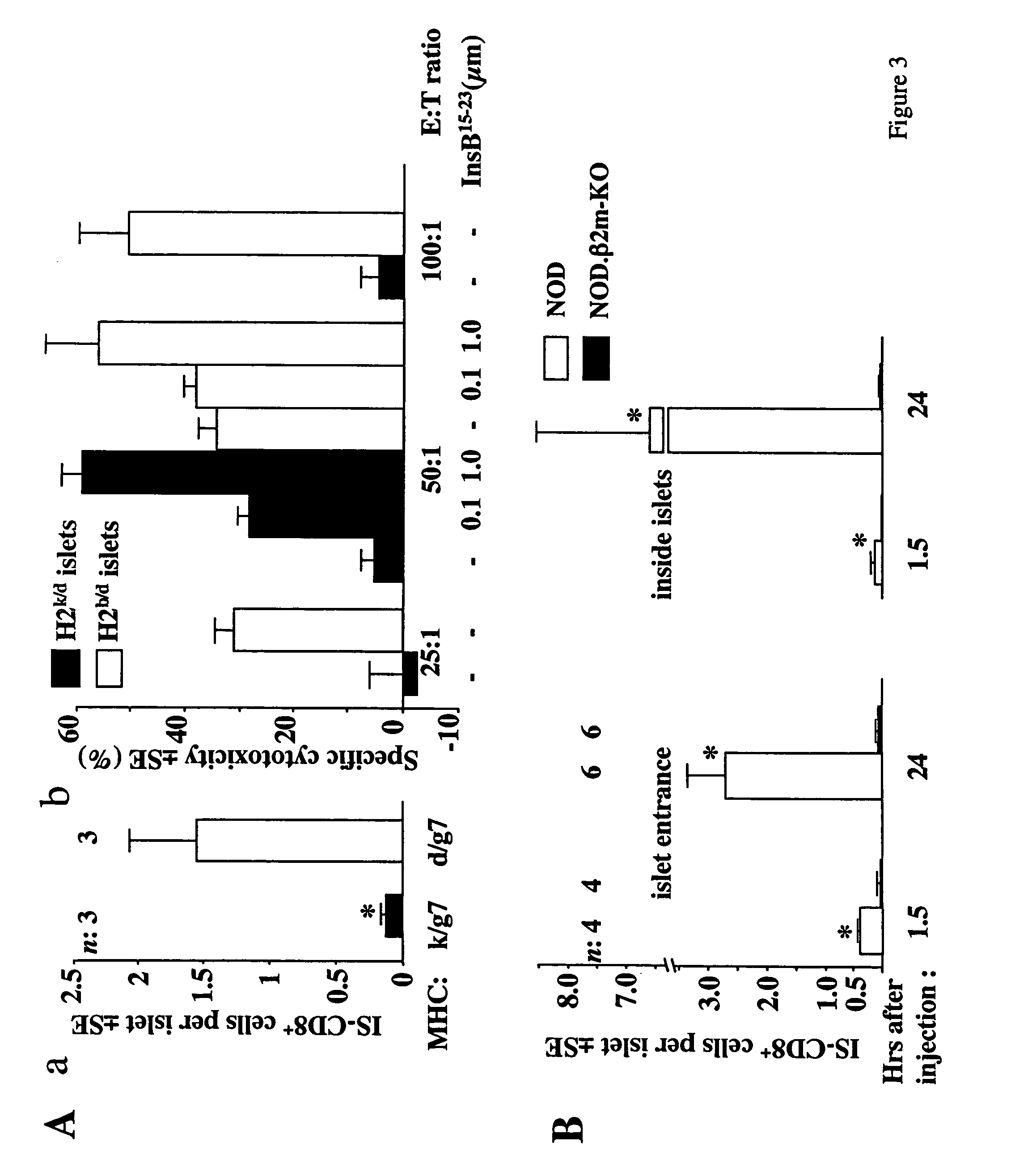Methods of modulating homing of T cell by interruption of chemokine/chemokine receptor signaling
a chemokine receptor and t cell technology, applied in the field of modulating homing of t cells by interruption of chemokine/chemokine receptor signaling, can solve the problems of reducing compliance, reducing compliance, and unable to fully understand the exact antigen(s) inducing diabetogenic attack, so as to and prevent or reduce the onset of insulin-dependent diabetes
- Summary
- Abstract
- Description
- Claims
- Application Information
AI Technical Summary
Benefits of technology
Problems solved by technology
Method used
Image
Examples
Embodiment Construction
During development of insulin-dependent diabetes mellitus (IDDM), autoreactive T cells extravasate from the bloodstream, invade pancreatic islets of Langerhans, and destroy insulin-producing beta cells. CD8+ cytotoxic T cells specific to islet antigens, and specifically insulin, are known to play a major role in such destruction. In order to destroy pancreatic islets, CD8+ cells must first home into the islets. It is known that T cells home to the secondary lymphoid organs, to specialized compartments such as intestinal epithelium and skin, and also to the sites of inflammation.
The current invention is based, in part, on Applicants' discovery that signaling through chemokine (e.g., CCL21) and a chemokine receptor(s) regulates the islet-specific homing of diabetogenic T cells (e.g., insulin-specific CD8+ T cells) and thus contributes to IDDM development. Applicants found that inactivation of G protein-coupled chemokine receptors on diabetogenic insulin-specific CD8+ T cells (IS-CD...
PUM
| Property | Measurement | Unit |
|---|---|---|
| shear stress | aaaaa | aaaaa |
| thick | aaaaa | aaaaa |
| thick | aaaaa | aaaaa |
Abstract
Description
Claims
Application Information
 Login to View More
Login to View More - R&D
- Intellectual Property
- Life Sciences
- Materials
- Tech Scout
- Unparalleled Data Quality
- Higher Quality Content
- 60% Fewer Hallucinations
Browse by: Latest US Patents, China's latest patents, Technical Efficacy Thesaurus, Application Domain, Technology Topic, Popular Technical Reports.
© 2025 PatSnap. All rights reserved.Legal|Privacy policy|Modern Slavery Act Transparency Statement|Sitemap|About US| Contact US: help@patsnap.com



